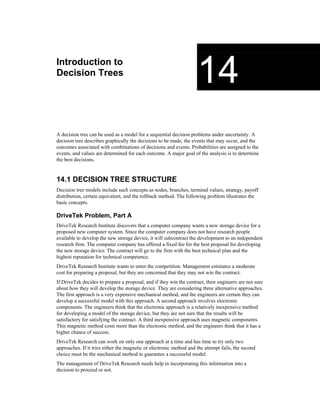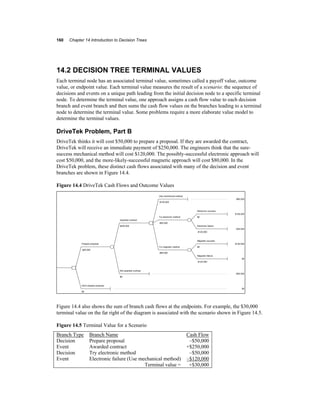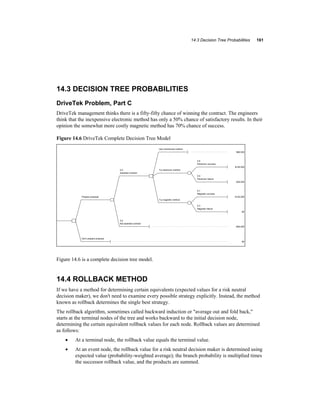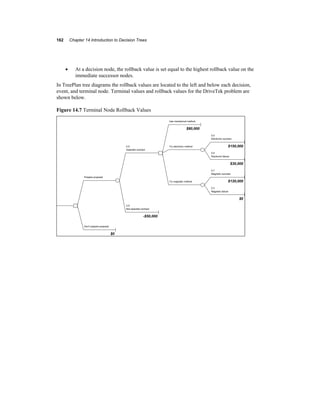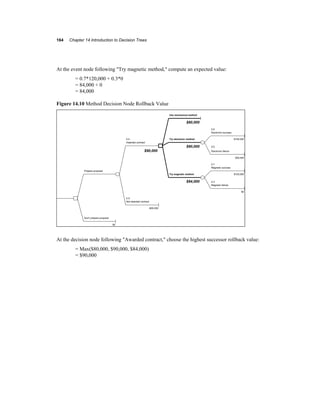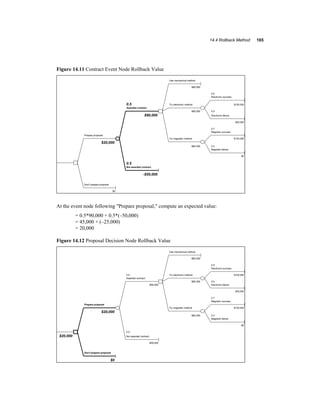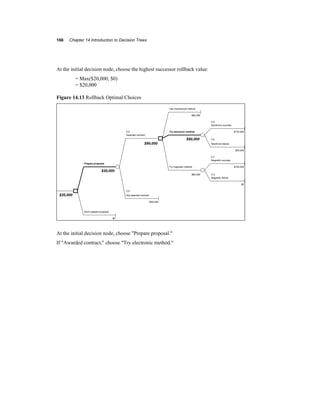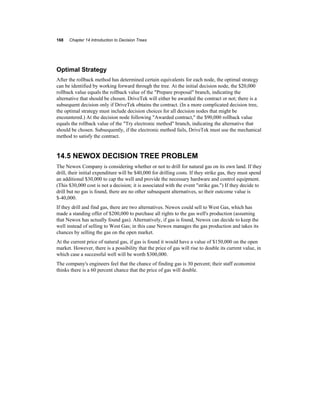1) A decision tree can model sequential decision problems involving uncertainty through nodes and branches. It shows decisions, possible events, and outcomes.
2) The decision tree for DriveTek Research considers whether to prepare a proposal for a new storage device contract. It also models choices for development approaches if they win.
3) Terminal values, probabilities, and the rollback method are used to determine the optimal strategy for DriveTek, which is to prepare a proposal and use the electronic approach if awarded the contract.
